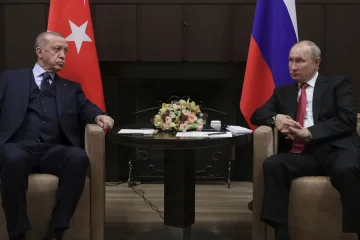
In a dramatic turn of events, oil prices experienced a remarkable 2% surge on Tuesday, reaching levels unseen since November. The cause? Saudi Arabia and Russia jointly announced an unexpected extension of their voluntary supply cuts, stretching them for an additional three months until the end of the year. This decision has sparked concerns among investors about the possibility of shortages during the peak winter demand period.
The rally in oil prices was most evident in Brent crude futures, which soared by a substantial $2.08, equivalent to approximately 2.3%, settling at a remarkable $91.08 per barrel by 11:43 a.m. EDT (1543 GMT). This achievement marked the first time Brent surpassed the $91 threshold since the previous November.
Not to be outdone, U.S. West Texas Intermediate crude (WTI) October futures experienced their own surge, climbing by $2.42 or around 2.8% to reach $87.97 per barrel—a 10-month high in itself.
The market was taken aback by the surprising three-month extension of the supply cuts by Saudi Arabia and Russia. While an extension into October was anticipated, the additional duration has startled industry observers.
Craig Erlam, an analyst at OANDA, remarked, “It would appear they’re trying to double down and capitalize on the recent price moves. Put a big buffer in place for when the cuts end.”
Both Saudi Arabia and Russia have committed to reviewing the supply cuts on a monthly basis, leaving room for adjustments based on evolving market conditions. This adaptive approach reflects their commitment to maintaining market stability.
Giovanni Staunovo, an analyst at UBS, offered his perspective: “With the production cut extended, we anticipate a market deficit of more than 1.5 million barrels per day in the fourth quarter of 2023. So, with oil inventories set to fall further over the coming months, we expect Brent to rise to $95 per barrel by year-end.”
In another development supporting oil prices, Goldman Sachs revised its earlier prediction, now estimating a 15% probability of a U.S. recession within the next 12 months, down from its previous forecast of 20%. This change has injected optimism into the market, as it suggests a reduced risk of a severe economic downturn, ultimately benefiting oil demand and prices.
Brent futures, the benchmark used to price more than three-quarters of the world’s traded oil, have witnessed a substantial uptick, with gains of approximately 26% since late June. This surge commenced when Riyadh initially disclosed its voluntary cuts.
The premium of the front-month Brent contract over the six-month contract surpassed $4 per barrel on Tuesday, reaching levels not seen since November 2022. This market structure, known as backwardation, is a clear indicator of tightening supply conditions for prompt delivery.



